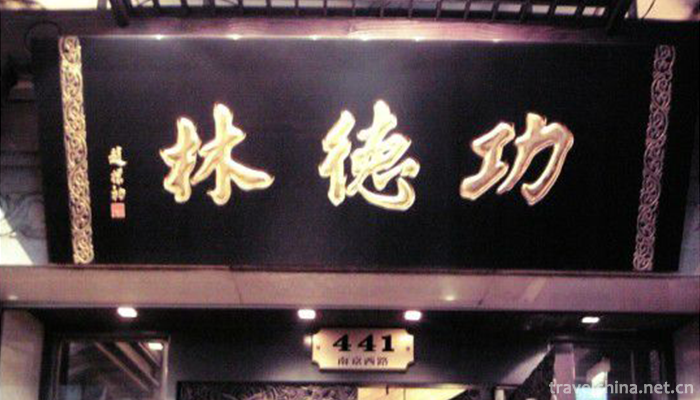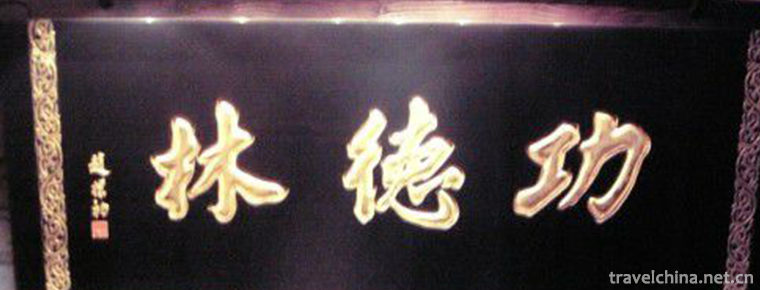Vegetarian production skills
Vegetarian production skills
Declaration Area or Unit: Shanghai Gongdelin Vegetarian Food Co., Ltd.
Gongdelin vegetarian food originated in temples. During Tongzhi period of Qing Dynasty, Temple vegetarian food gradually entered society. In 1922, the disciples of Wikipedia, a Buddhist monk at Changjing Temple in Chenghuangshan, Hangzhou, set up a vegetable restaurant at the Guizhou intersection of Beijing Road, Shanghai, for the purpose of "promoting Buddhism, advocating vegetarian diet and liberating life". With tofu, mushroom and vegetables as raw materials, vegetarian meat is cooked, that is to say, "fish" and "meat" dishes with vivid shape are cooked by hand. Because of its excellent production, unique taste, customers and thriving business. At the time of its founding, Gongdelin's shop was only 300 square meters in area. In 1927, it moved to No. 43 Huanghe Road and expanded to 1,000 square meters. It was divided into three floors: snack restaurant on the first floor, box on the second floor and Buddhist hall on the third floor. At this time, Gongdelin began to recruit vegetarian chefs from temples all over the country. Business is booming. He has won praise from Shanghai residents for his unique vegetarian handicraft and cooking methods.
Gongdelin has famous vegetarian dishes such as Butter Crab meal, fried eel silk, sliced fish with grains, yellow croaker with sweet and sour sauce, spiced tender chicken, crucian carp and winter bamboo shoots. These vegetable dishes are exquisite in material selection, exquisite in production, lifelike in shape, various in color, meat-like in taste and various in cooking methods. Each dish is elaborate and has the dual functions of food and art appreciation. Customers can enjoy it while tasting it.
In 1997, due to the urban transformation of Shanghai, Gongdelin moved to Nanjing West Road. Its vegetarian production continued to develop and innovate, and still attracted many consumers with its distinct characteristics.


-
1.qikongqigong
Qigong (qigong) is a traditional Chinese method of health care, health preservation and disease elimination. Ancient or "Dandao" is a kind of physical
Time 2018-11-13 -
2.Great mercy Pavilion Plain noodle
Great mercy Pavilion Plain noodle, originated in Zhaitang of Daci Pavilion Chan Yuan in Baoding City, Hebei Province, has a history of 800 years.
Time 2018-11-27 -
3.Harbin Sun Island Scenic Area
Sun Island Scenic Area is located on the North Bank of Songhua River in Harbin City, Heilongjiang Province, with a total area of 88 square kilometers, of which the planned area is 38 square kilometers
Time 2018-12-05 -
4.Kanas Scenic Area in Altay Area
Kanas Scenic Area is located in the middle section of Altai Mountain in Xinjiang, which is located in the border area between China and Kazakhstan, Russia and Mongolia
Time 2018-12-12 -
5.Jingxing spent
Jinglonglahua, a traditional dance in Jinglongxian County, Hebei Province, is one of the national intangible cultural heritage.
Time 2019-05-08 -
6.Pudong Storytelling
Pudong storytelling, also known as cymbal books, Shanghai books, peasant books and so on. Pudong pays equal attention to both storytelling and singing, pays attention to plot, and has a fast rhythm. T
Time 2019-06-09 -
7.Cork paintings
Cork painting, also known as cork carving, woodcut. Chinese traditional folk sculpture crafts. It is mainly produced in Fuzhou, Fujian Province. It is a handicraft combining carving and painting. Simp
Time 2019-06-11 -
8.Shuizu Duanwu Jie
The aquarium duanjie is called "borrowing duanjie" in the language of water. "Duan" means "the first year of life" or "New Year", "borrow" means "
Time 2019-06-16 -
9.Womens clothing in Yongzhishui Townshi Suzhou
The women's clothing in Yongzhishui Township, Suzhou, is an outstanding representative of the Han nationality's clothing. It is a typical and representative clothing of the working people in Wu area.
Time 2019-06-17 -
10.Tujia Nationalitys Quinone
"Tujia Diaoqu" is not only a wind instrument with peculiar structure, but also a genre of folk songs. At the same time, in Western Hunan, it is also the name of common music cards shared by
Time 2019-06-23 -
11.Qi baishi
Qi Baishi (January 1, 1864 - September 16, 1957), formerly known as Zhi Zhi, the word Wei Qing, No. Lanting Pavilion, later renamed Huang, the word is on the edge, the number of Bai Shi, white stone m
Time 2019-09-04 -
12.University of International Relations
University of International Relations (University of International Relations), referred to as "Guo Guan", is located in the western suburb of Beijing. Ministry of Education of the People's R
Time 2019-09-22